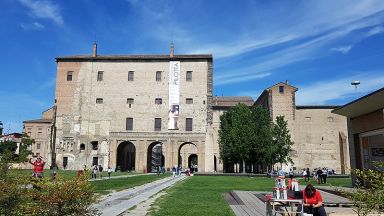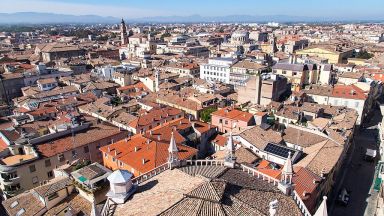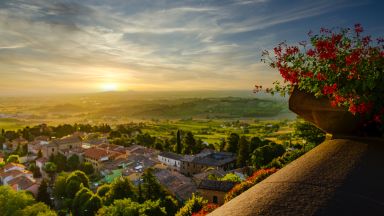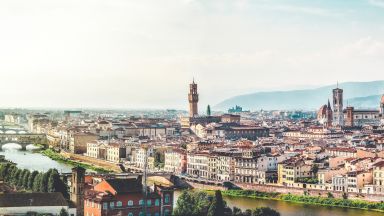Museums & the Pilotta palace
Museum and Palace in Parma

The Pilotta Palace, located in Parma, Italy, is a monumental complex that houses several remarkable cultural institutions. Originally commissioned by the powerful Farnese family, this palace is now home to the Archaeological Museum, the National Gallery, the Farnese Theatre, and the Palatina Library, offering visitors a rich and diverse cultural experience.
The National Gallery, which began under the patronage of the Dukes of Parma, boasts an extensive collection of artworks spanning from the 13th to the 19th centuries. Notable pieces include works by renowned artists like Correggio, Parmigianino, Tintoretto, Guercino, and more. The gallery’s collection showcases the Emilian school of painting from the 15th to the 18th centuries, as well as works from other Italian and European schools. Some highlights include a painting attributed to Leonardo da Vinci, portraits by Hans Holbein the Younger, and works by Correggio.
The Farnese Theatre, regarded as one of Italy’s most beautiful historical theaters, was constructed between 1618 and 1619 on the orders of Ranuccio I Farnese. The theater’s horseshoe-shaped stalls are surrounded by two tiers of loggias with Palladian windows, showcasing Doric and Ionic columns. It was designed by G.B. Aleotti, inspired by Palladio’s Olimpico Theatre in Vicenza. The stage featured innovative movable scenery and galleries, pioneering stage machinery in Italian theaters. The theater was known for its special effects, recreating land and sea on the stage and in the auditorium. Despite falling into disrepair and suffering damage during World War II, it was faithfully rebuilt in 1950.
The National Archaeological Museum, founded by Don Philip of Bourbon in 1760, was established to house artifacts from the Roman town of Veleia near Piacenza. It was initially stripped of its prestigious items during the French rule but regained them after the Congress of Vienna. Under Marie Louise, the collection expanded through significant purchases. Today, the museum showcases the Tabula Alimentaria of Emperor Trajan, directions for the care of poor children discovered in Veleia. Visitors can explore the Hall of Ceramics and the Egyptian Section.
The Bodoni Museum is dedicated to Giambattista Bodoni, a renowned typographer known for inventing new typefaces, later referred to as Bodonian. As the head of the Parma Royal Printing Works from 1768, he transformed it into an international printing center known for its exceptional quality. The museum houses approximately 80,000 original tools and items, including punches, presses, perforating dies, matrices, and alphabet boxes used for printing precious works. Notably, the museum also holds the Greek version of the Iliad printed in 1808, among other rare prints and works.
These cultural institutions within the Pilotta Palace offer a diverse and enriching experience for visitors interested in art, archaeology, history, and typography.
The Museums & the Pilotta palace appears in our Complete Guide to Visiting Parma!
This website uses affiliate links which may earn a commission at no additional cost to you!
Visiting Museums & the Pilotta palace
Open from Tuesday to Sunday from 10.30am to 7pm (last entrance at 6pm).
€ 16.00
Nearby Attractions
- Teatro Farnese (0.0) km
Historic Building and Theatre in Parma - Regio Theatre (0.2) km
Historic Building and Theatre in Parma - Chamber of St. Paul and Cell of St. Catherine (0.2) km
Monastery in Parma - Basilica Santa Maria della Steccata (0.3) km
Basilica in Parma - Diocesan Museum, Parma (0.3) km
Museum in Parma - Baptistery, Parma (0.4) km
Baptistery in Parma - Piazza Garibaldi, Parma (0.4) km
Square in Parma - Santa Maria Assunta Cathedral, Parma (0.4) km
Cathedral in Parma - Monastery and church of San Giovanni Evangelista (0.5) km
Monastery in Parma - Parco Ducale (0.5) km
Park in Parma


